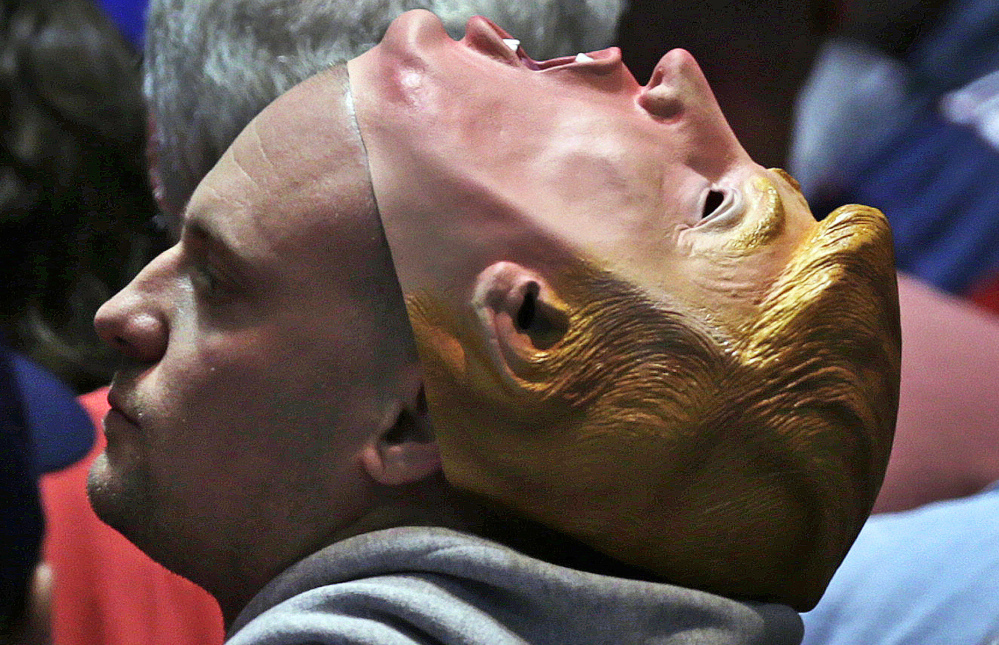WASHINGTON — To all the political junkies yearning for a contested Republican convention this summer: Not so fast.
It’s still possible for Donald Trump to clinch the nomination by the end of the primaries on June 7. It starts with a big win Tuesday in New York’s primary.
Trump is the only candidate with a realistic chance of reaching 1,237 delegates before Cleveland. What comes next isn’t a prediction, but rather, a way in which he could do it.
There are 95 delegates at stake in the Empire State, and it’s vital for Trump to win a big majority of them. It won’t be easy.
There are 14 statewide delegates and three delegates in each congressional district.
If a candidate gets more than 50 percent of the statewide vote, he gets all 14 delegates. Otherwise, he has to share them.
If a candidate gets more than 50 percent of the vote in a district, he gets all three delegates. Otherwise, he has to share.
Let’s say Trump does make it to 50 percent, but Kasich or Cruz wins five districts; Trump will take 77 delegates on the night.
Trump’s running total: 821.
Five states have primaries on April 26, with 172 delegates at stake: Pennsylvania, Connecticut, Delaware, Maryland and Rhode Island.
Pennsylvania could be trouble for Trump. The state has a system in which 54 delegates – three from each congressional district – are listed by name, with no information for voters to know who they support.
So even if Trump wins Pennsylvania, he’s only guaranteed to claim 17 of its 71 delegates.
Connecticut awards 13 delegates to the statewide winner and three to the winner of each congressional district, for a total of 28. If Trump does well, he could get 22 delegates.
Delaware’s 16 delegates are winner-take-all. Lose and he’d better make it up elsewhere.
Maryland awards 14 delegates to the statewide winner and three to the winner of each congressional district, for a total of 38. Polls show Trump with a big lead.
Trump can afford to lose Rhode Island, which awards its 19 delegates proportionally.
In all, it’s a day on which we’ll say Trump claims 93 delegates.
Trump’s running total: 914.
Five states hold contests in May, with 199 delegates at stake: Indiana, Nebraska, West Virginia, Oregon and Washington.
Indiana awards 30 delegates to the statewide winner and three to the winner of each congressional district, for a total of 57. If Trump wins the state and most districts, he could collect 45.
West Virginia is another unique state in which voters elect 31 delegates. But the delegates will be listed on the ballot along with the presidential candidate they support. If Trump does well here, he could pick up 20 or more delegates.
Nebraska’s 36 delegates are winner-take-all. But neighboring Kansas and Iowa opted for Ted Cruz. Bad omen.
Oregon and Washington state award delegates proportionally.
We’ll give Trump 70 delegates for May. Running total: 984.
This could be Trump’s D-Day. Or his Waterloo.
Five states vote on June 7, with 303 delegates up for grabs. The biggest prize is California, along with New Jersey, South Dakota, Montana and New Mexico.
The only state Trump can lose is New Mexico, which awards 24 delegates proportionally.
New Jersey, South Dakota and Montana are winner-take-all, with a total of 107 delegates.
California is more complex, with 172 delegates at stake. The statewide winner gets only 13. The other 159 are awarded according to district results.
For Trump to clinch on June 7, he has to win a big majority of California’s districts. If he wins 39 districts, he gets 130 delegates.
On the last day of the primary campaign, we’ll say Trump wins 242 delegates.
Trump’s total: 1,226 – 11 short.
But … Missouri has certified the results of its March 15 primary, with Trump beating Cruz by 1,965 votes. If the results survive a recount, Trump wins Missouri and another 12 delegates.
Total: 1,238. Cue the balloons.
Send questions/comments to the editors.



Comments are no longer available on this story